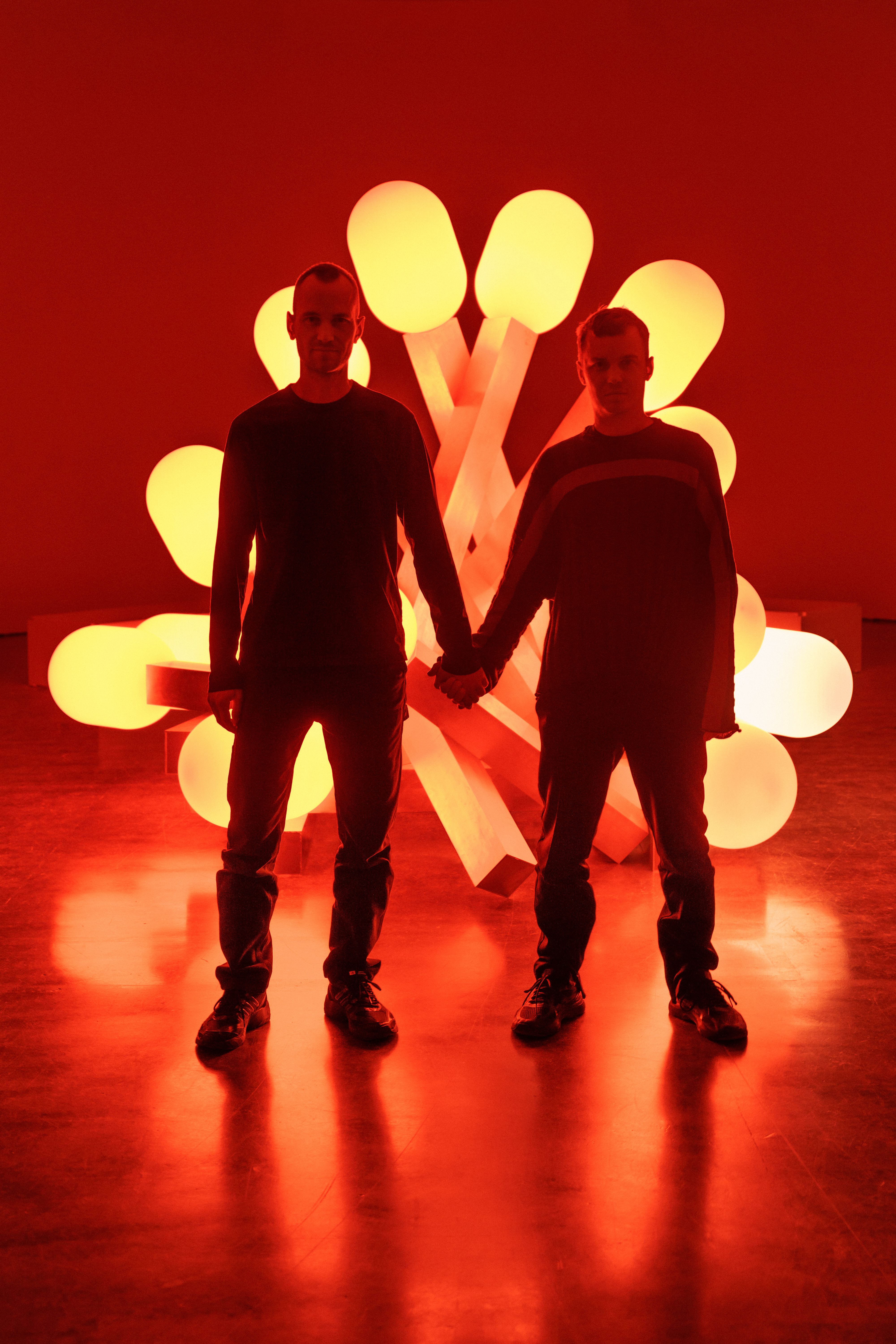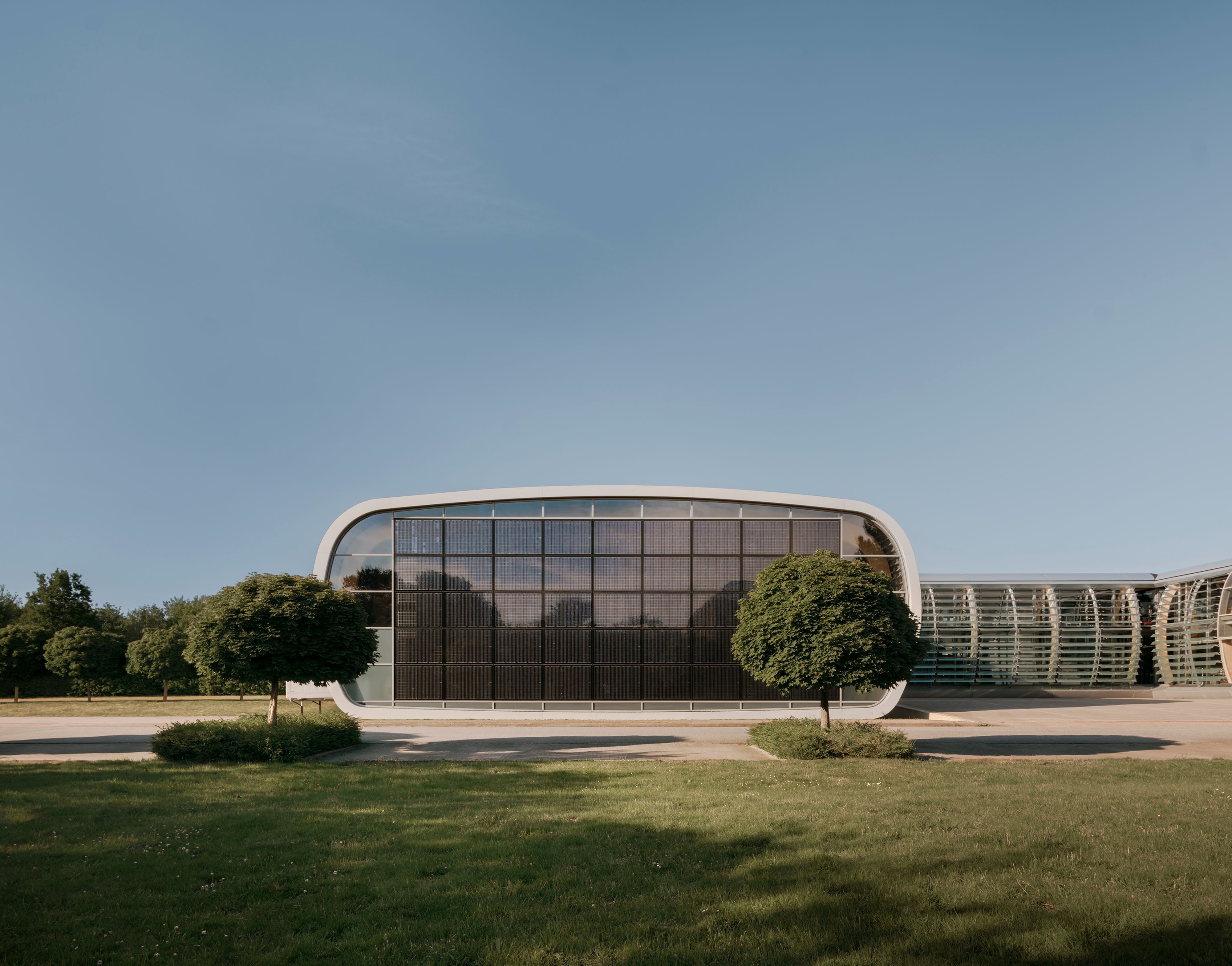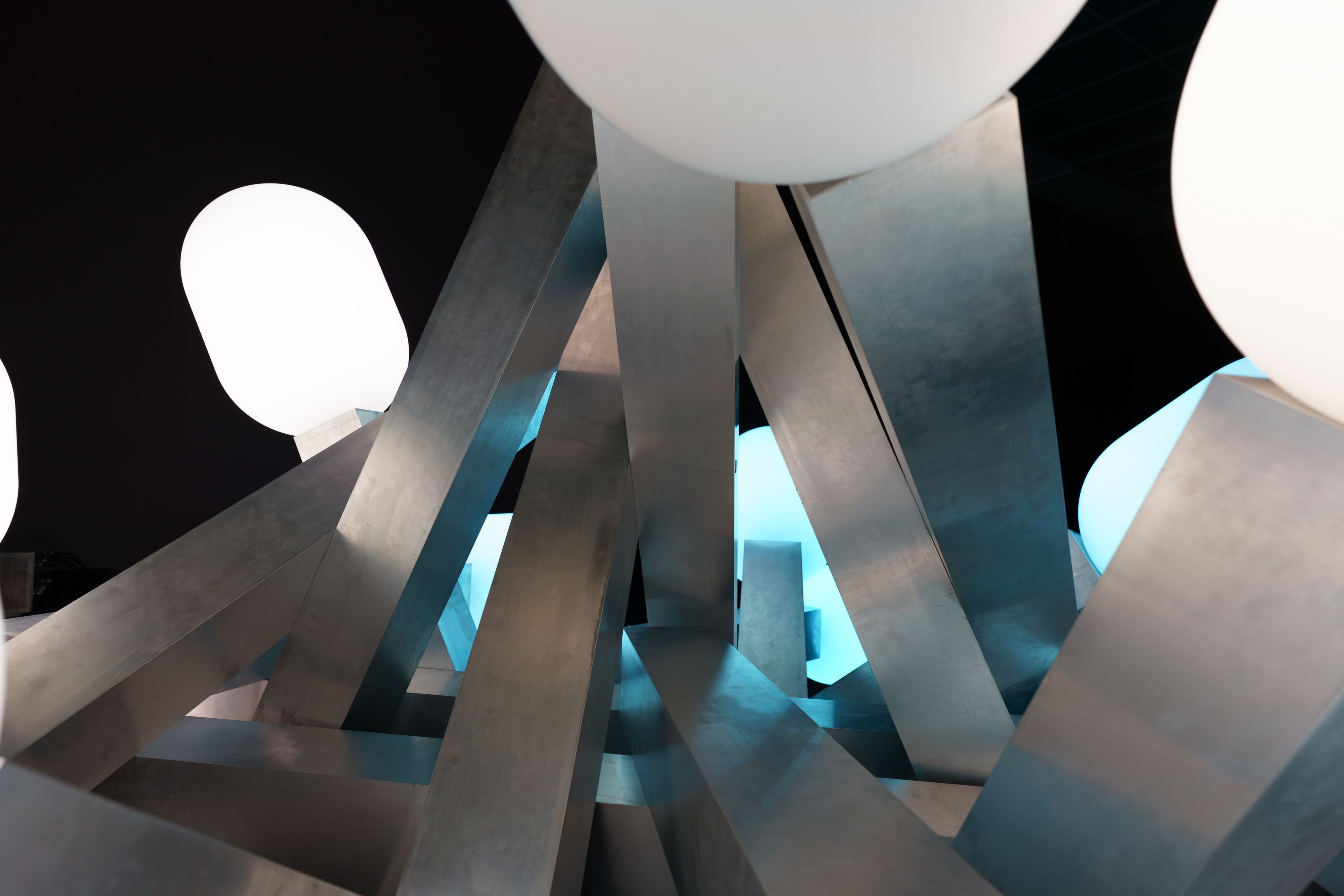
Interior view of the GRAU Campus near Hamburg. Photography by Simon Menges

Bonfire (2022), an installation by GRAU at Norway’s Bergen Assembly. Photography by Janne Savon
When, in 2021, Melchior and Timon Grau took over Tobias Grau, the German lighting company their parents founded in 1986, the brothers seized the opportunity to rethink not the only the brand’s identity, but also the role of lighting in people’s lives. One of their first moves was shortening the business’s name to simply GRAU. “We’re coming from a personalized name, which is not gender neutral and presents an individual person,” explains Melchior. Now, he says, without being tied to a full name, they and their collaborators can contribute more openly to the GRAU umbrella identity, which the brothers are also using for their art practice.

Timon and Melchior Grau, photographed in front of GRAU's Bonfire installation at Bergen Assembly in September 2022. Since 2021 the brothers are joint CEO and creative directors of the company formerly known as Tobias Grau. Photography by Janne Savon
While the Grau brothers were studying at Berlin’s Universität der Künste and Frankfurt’s Städelschule, era-defining artists like Wolfgang Tillmans and Hito Steyerl pushed them to consider how art and the world interacted with each other. “What [the artists who taught us] have in common,” Melchior recalls, “is that they basically said, ‘Art is interesting, but only if you focus on society and what kind of change you want to inspire.’” This spirit influences their approach to industrial-design projects, which they develop with their 150-strong research team in the company H.Q. near Hamburg. “We aim to change our perception toward light by making it activate people’s feelings and create social environments you connect to,” Timon explains. It’s a mission that harkens back to the fundamental human relationship to light. “One of the earliest forms of architecture and design is the control of fire,” Melchior points out.

The brothers recently shortened the family business’s name from Tobias Grau to simply GRAU. The new logo was designed in collaboration with Porto Rocha.
Whereas flames or sunlight have many social, symbolic, and spiritual associations, electric lighting is mostly relegated to the realm of practicality or decoration. The brothers aspire to bring to lighting technology the same affective quality as music. They see the potential in “digital light,” which for them distinguishes itself from traditional filament bulbs, but also from the narrower ways current lighting technology is framed. “We feel talking about the LED is super old school because it comes from the idea that you have a single bulb,” says Melchior. Today’s appliances are in fact composites of multiple diodes, software, and everything holding them together: the single-bulb analogy no longer applies. Their first commercial proof-of-concept was 2018’s Parrot, a portable battery-powered floor lamp with a circular light-emitting disk whose brightness and color temperature shift with a slight touch of the finger. “Mobility was the first move towards the immersive, interactive empowerment of the user,” says Timon, who adds that the lamp’s rotating neck was inspired by the human body.

The GRAU Campus near Hamburg, home to 200 employees. Photography by Simon Menges

Interior view of the GRAU Campus near Hamburg. Photography by Simon Menges

Exterior view of the GRAU Campus near Hamburg. Photography by Simon Menges

Interior view of the GRAU Campus near Hamburg. Photography by Simon Menges
In their artwork, the Grau brothers intensify the emotional immersion. One of their first projects, Fire (2021), which debuted at Geneva’s Biennale de l’Image en Mouvement, punned the idea of the unitary “bulb” they’re contesting in a series of pulsating light sculptures arrayed throughout the space. More recently, at Norway’s Bergen Assembly, they presented Bonfire (2022), a selection of lighting elements propped against one another like a pyre of giant matchsticks. This “living light” loops with a kind of subtle narrative and invites a more sustained engagement with lighting. “These sculptures are a very important research field for the entire brand and mission,” says Timon. “They’re where we can try things out, and they become the starting points for translating emotions into applied contexts and products.” A more commercial version of the light will be released in early 2023 — the first product launch under the new name.

Bonfire (2022), an installation by GRAU at Norway’s Bergen Assembly. Photography by Janne Savon
While Timon and Melchior note that art exhibitions and commercial products have different manners of being consumed, grouping them under the unified GRAU name allows them to ask questions not only about the place of light in our lives, but also about the status of art. As Melchior puts it, “Why can’t a brand not produce art? And why can we not also, as artists, bring out products that people can use?”